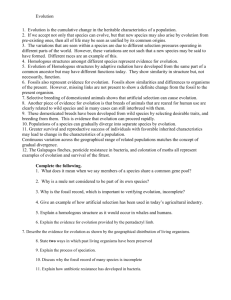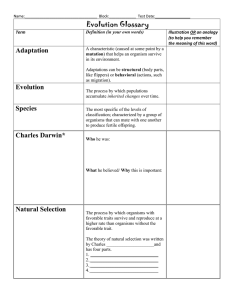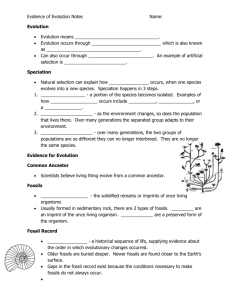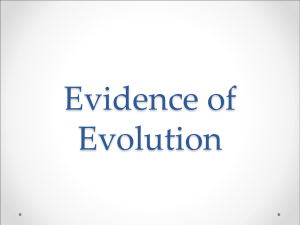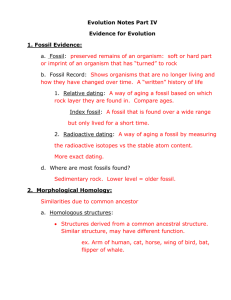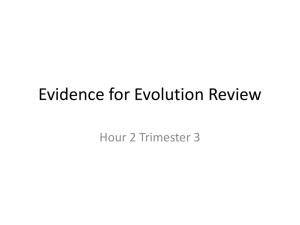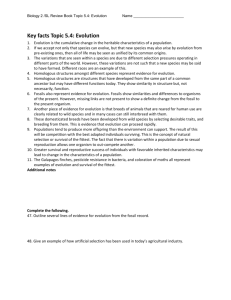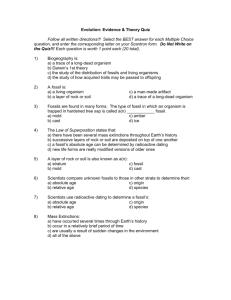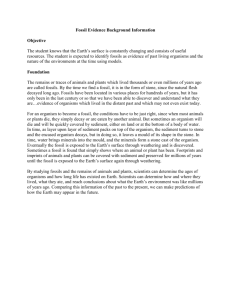Lesson 3 – Evidence of Evolution 1. T, T, T, T 2. The land was once
advertisement
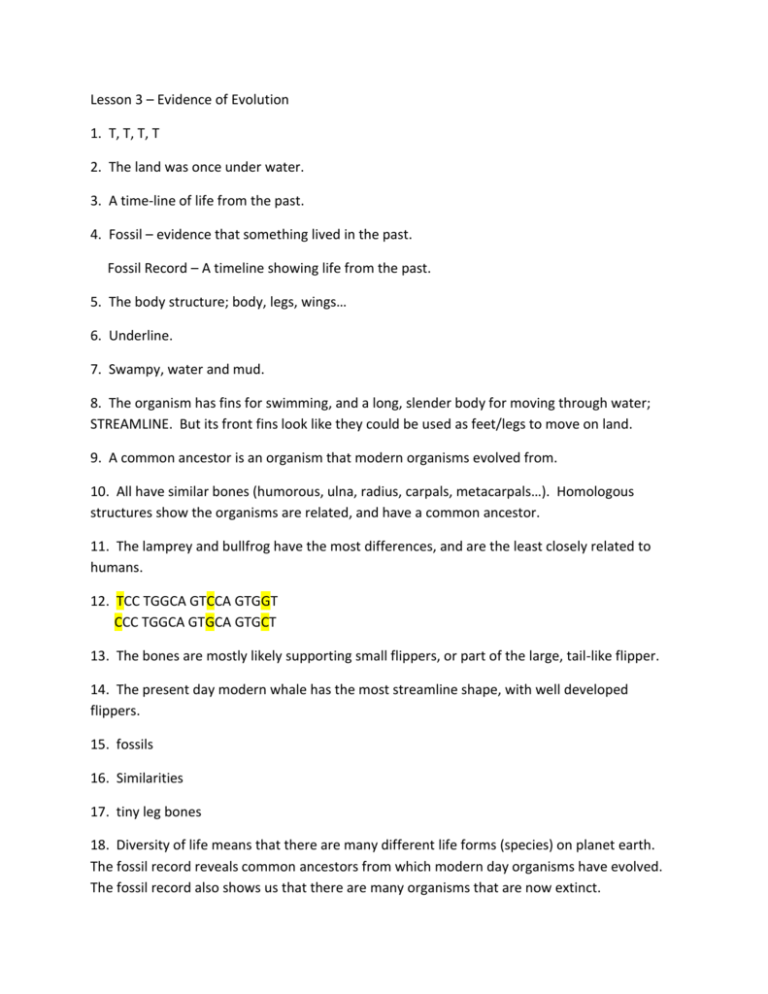
Lesson 3 – Evidence of Evolution 1. T, T, T, T 2. The land was once under water. 3. A time-line of life from the past. 4. Fossil – evidence that something lived in the past. Fossil Record – A timeline showing life from the past. 5. The body structure; body, legs, wings… 6. Underline. 7. Swampy, water and mud. 8. The organism has fins for swimming, and a long, slender body for moving through water; STREAMLINE. But its front fins look like they could be used as feet/legs to move on land. 9. A common ancestor is an organism that modern organisms evolved from. 10. All have similar bones (humorous, ulna, radius, carpals, metacarpals…). Homologous structures show the organisms are related, and have a common ancestor. 11. The lamprey and bullfrog have the most differences, and are the least closely related to humans. 12. TCC TGGCA GTCCA GTGGT CCC TGGCA GTGCA GTGCT 13. The bones are mostly likely supporting small flippers, or part of the large, tail-like flipper. 14. The present day modern whale has the most streamline shape, with well developed flippers. 15. fossils 16. Similarities 17. tiny leg bones 18. Diversity of life means that there are many different life forms (species) on planet earth. The fossil record reveals common ancestors from which modern day organisms have evolved. The fossil record also shows us that there are many organisms that are now extinct. Lesson Review 1. Fossils 2. Fossil Record 3. Fossil evidence, homologous structures, embryological development, DNA. 4. Fossils show the ancestors of modern organisms. Fossils show evolutionary links. 5. Show homologous structures; both have a common ancestor. 6. Organisms with a common ancestor should share similar DNA sequences. The more alike the DNA, the more related the organisms. 7. The human appears to be most closely related to the chimp, and not as closely related to the turtle and tuna. 8. Other differences must exist in the DNA and amion acids coded for. 9. Changes in the organism can be seen taking place slowly over time; the result of environmental pressures and the natural selection for certain traits.
